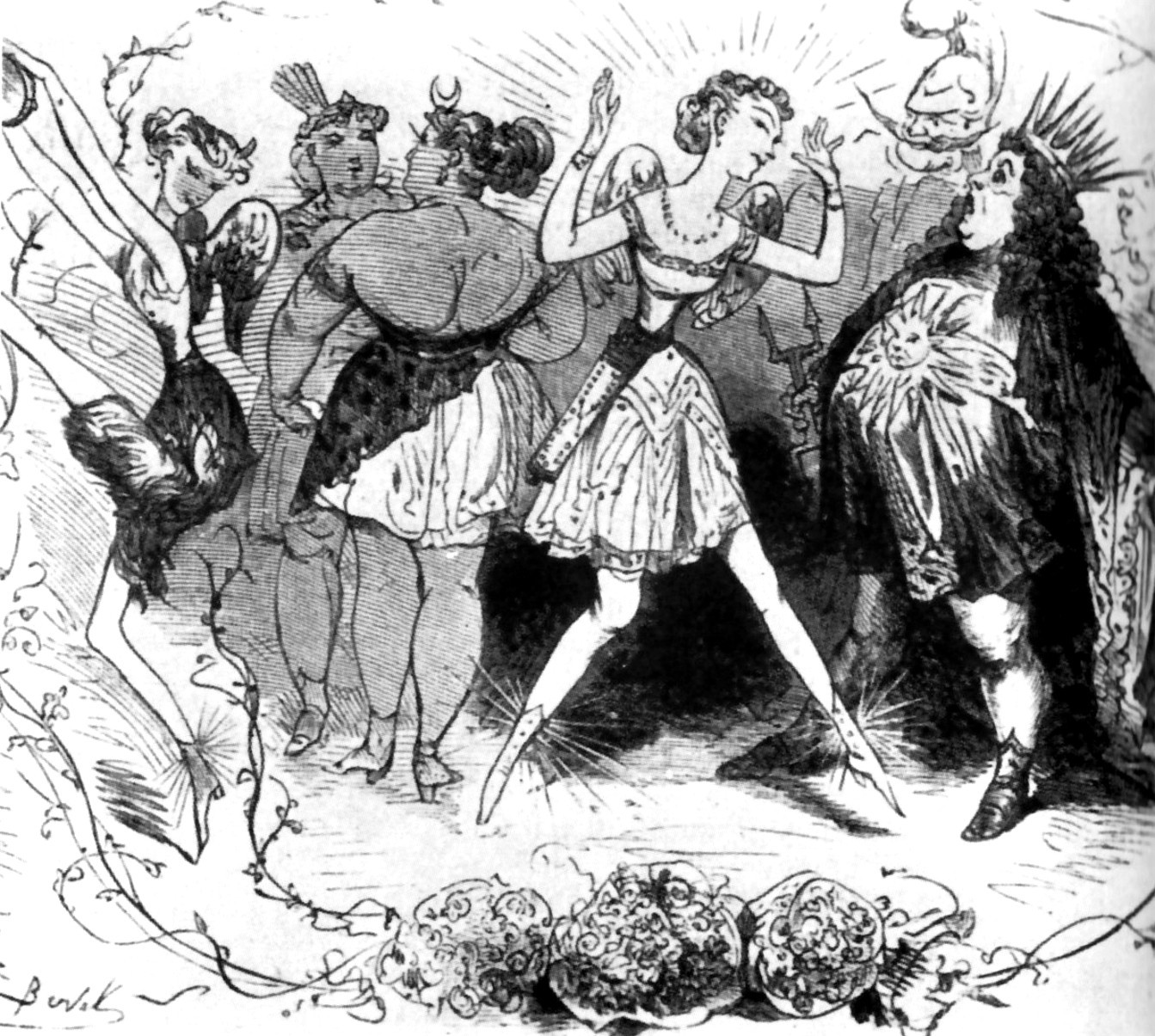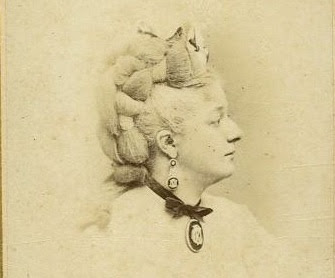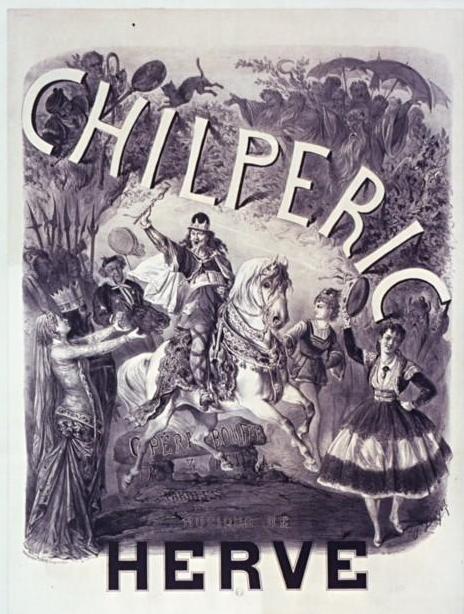Kurt Gänzl
Kurt of Gerolstein Blog
10 July, 2017
When I lived in St Paul de Vence, my partner Ian and I took a weekly bus jaunt down to Nice for a stroll through the splendid Monday flea-market and lunch at the wonderful Acchiardo restaurant. Ian searched for musical theatre recordings, I searched for simply anything paper-made to do with my subject. Programmes, sheet music, ephemera. I remember I got the complete works of Meilhac and Halevy in umpteen volumes for about 30 quid. And amongst a folder of junky old stuff I found a selection of letters. Pradeau, Hyacinthe, Julia Baron … well, who apart from myself would, in the 1980s, have known even who they were. A few Francs apiece. Bought them. Now that I know so much more, decades later, I’m sure that I left some 1860s treasures behind. Julia Baron. Just a name. All I knew was the she had created the role of Dindonette in Hervé’s L’Oeil Crevé. And this was a simple note, arranging a rehearsal. But 6 Francs ..? So I bought it, and it has sat on a shelf, with the others, for 30 years. But today a photo of said lady surfaced on my radar. Hmm. Luscious lady. So I got fascinated, and thought I’d research a little.

Opéra bouffe star Julia Baron. (Photo: Kurt Gänzl Collection)
I didn’t find anything about her birth and early life. I can’t believe one would choose ‘Baron’ as a stage name, given that there was a dynasty of Barons in the French theatre … but anyway French encyclopedias skip around that and just say born c1836. And what emerges thereafter falls into three categories. (1) Her huge success as Dindonette (2) her renunciation of opéra-bouffe for the comedy of the Palais-Royal and (3) her colorful side career as one of Paris’s top courtesans. She was following in the footsteps of the three-years-older Hortense Schneider (of whom she was touted as the ‘successor’) not only as performer on the stage but as a performer off the stage.

“The Dressing Room of Hortense Schneider,” 1873. Painting by Edmond Morin.
Her career on the stage can be summed up pretty briefly. It was almost entirely successful. She began small. At the Bouffes-Parisiens, it seems. (Not Italy as one source says: that was Clara Baron). Until Hervé took a fancy to her and hired her for a featured role in his 1865 remake of the famous féerie La Biche au bois for Marc Fournierat the Porte Saint-Martin. Hervé himself played the Prince, house star dancer Mariquita was Robin, and Julia was voted ‘ravissante’ in the saucy part of Giroflée. The show ran an entire year.

Jules Chéret’s poster for “La biche au bois” (The Doe in the Wood), 1866.
From there, Julia returned to the Bouffes, where she can be seen as Juno in the famous Cora Pearl (for 12 nights) edition of Orphée aux enfers. ‘Elle est bien la reine d’Olympe’ sighed the press. But one or two saw past the beauteous face and deliciously plumpish form and decided ‘Julia Baron avec sa voix ferme et mordante, son jeu vif et intelligent, avait mis le rôle de Junon au premier plan’.

Famed courtesan Cora Pearl as Cupid in the “Orphée” revival, Paris 1867.
But Hervé wasn’t about to let his star go. When his new crazy opéra super bouffe L’Oeil Crevé was staged at the Folies-Dramatiques he imported Mlle Baron from the Bouffes to star as Dindonette. She rocked Paris. ‘Jamais Hervé ne trouva interprète aussi parfaite pour le rôle ultra fantaisiste de Fleur de Noblesse’ elle ‘fit courir tout Paris’, ‘Mlle Julia Baron avait assumé une grande responsabilité dans L’Oeil crevé et, rendons-lui justice, avait obtenu une grande part du succès…’

Sheet music cover for Hervé’s “L’Oeil crevé.”
The newspapers, which had but little featured Julia’s high-society sex life alongside more starry others of her ilk, such as Schneider and Léa Silly, moved, now that she was a star, into full flight. An Englishman, it was reported, had asked her to ‘make him happy’ and she had responded ‘on the 100th night of the run’. The journalist continued: L’Oeil crevé has just passed its 300th night, so we suppose he has been ‘made happy’ three times.

Newspaper report on Julia Baron, 1868.
Her name was linked with a ‘gold refiner’ who was said to have bought her a house, with the libertine Saint-Cère, with Prince Anatole Demidoff, whom she allegedly shared with her understudy Mathilde Lasseny, although his children were by a third actress-singer Céline Montaland … she was listed prominently in Arsène Houssaye’s piece on Les Courtisanes, and followed only Cora Pearl and Giulia Barucci in a colorful list entitled Les Highlifeurs in 1868. One paper dismissed the whole bunch as ‘cocottes’, not to be compared with grand ‘courtisanes’ of earlier times, but they seem to have done their job effectively enough. Another, more susceptible, spent half a page comparing the off-stage talents of Baron and Lasseny. Julia came out as ‘classier’.

The famed courtesan Mathilde Lasseny. (Photo: Kurt Gänzl Collection)
But she was top of another list too. No-one, insisted the press, time and again, could play and sing the crazy works of Hervé with such verve and ease and effect as could the delicious Julia Baron.

Cover of the piano score for “Chilpéric”.
But she threw it in. Hervé had written the role of Frédégonde in for her, the Folies-Dramatiques had scheduled her for Le Canard à Trois becs (both to turn out huge hits), but Julia walked, and followed where the older Schneider had led to the Palais Royal. She would stay there for the six years of her career remaining. She sang Métella and later la Baronne in La Vie parisienne, Schneider’s role in Les Diables roses, created the part of Castagnette in the international hit Le Carnaval d’un merle blanc (Nemesis) and in 1871 starred in the premiere of an even bigger hit as Fanny ‘Bombance’ in Tricoche et Cacolet. Engaged for three years at the Palais Royal, she remained for five, after which it is said she went to Russia. For the second time, she had cut in the blossom a major career.

Blanche d’Antigny (1840-1874) was the blonde French actress/courtesan who inspired Edouard Manet to paint “Nana” which, in turn, moved Emile Zola to write the book of the same name.
I don’t know what became of her. Neither, seemingly, did the French press. But as her fellow high-lifeurs and good-time-girls — Marie Cico, Blanche d’Antigny et al – bade their lives and their diamonds farewell ‘before their first wrinkle’, Julia was quoted as being still alive. When L’Oeil crevé was revived in 1882 the Dindonette was slated and a reviewer remembered: ‘Je revois encore cette gaie, grosse, grasse, blonde et rose Julia Baron avec ses belles lèvres rouges et rieuses dans son joli visage…’.
I really hope she lived long and happily. I think the French knew. They just didn’t tell. Schneider is said to have outlived her. Me, I just wonder what Julia Baron might have been and done in Schneider’s celebrated original roles had she been in the right place at the right time. Well, we’ll never know. But, as one writer said of her ‘elle avait l’eloquence de la chair’. She simply oozed sex.
So that little 6-Franc page of paper from Les Puces in Nice has quite a story behind it. I have a letter from a nineteenth-century Parisian … cocotte?
To read the full original article, click here.
